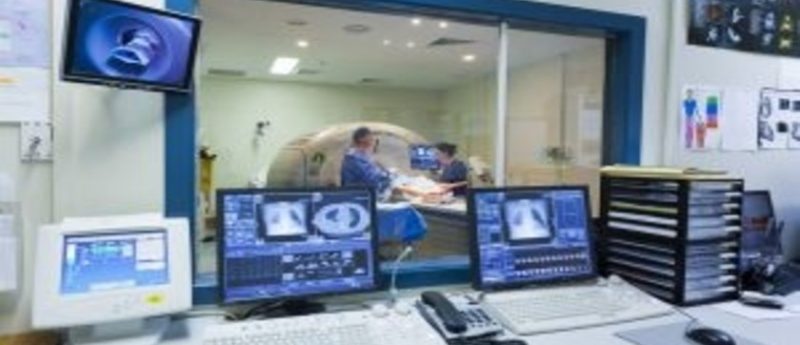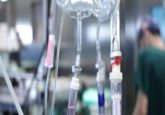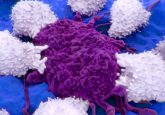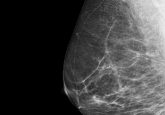Could we eliminate cancer before late old age by 2050?

January 2015 saw the release of a new University College London (UCL; London, UK) School of Pharmacy report titled ‘Overcoming Cancer in the 21st Century’ [1], which claims that “most cancer deaths before late old age could be eliminated by 2050″. The report, which was authored by Jennifer Gill (UCL School of Pharmacy), Richard Sullivan (King’s College London) and David Taylor (UCL School of Pharmacy), indicates that with continued improvements in prevention, diagnosis and treatment this target is “a perfectly reasonable estimate.” Taylor and Gill recently spoke exclusively to Oncology Central, expanding on their report and the evidence behind these conclusions.
Over the past 3 years, Jennifer Gill and David Taylor have worked closely together on projects focused on aging, pain, universal healthcare, off-label use of medicines and most recently how pharmacists can expand their role within healthcare systems.
Their latest work aimed to evaluate the current status of cancer in the UK, exploring how our understanding of the disease has exponentially increased in recent decades, and to project what may happen in the next 35 years in terms of cancer incidence and mortality rates. They also wanted to establish what needs to be actioned or improved in order to achieve the overarching goal of eliminating cancer before late old age.
The research used a range of sources, including Cancer Research UK statistics for age-standardized death rates from 1970 onwards and associated diagrams. Taylor explained: “For under forties and under twenties, the line [death rates] has been going straight down since 1970. For the other age groups, the line curves down at around 1990 and for the over eighties it is still going up.”
Lifestyle not enough – improving primary prevention and diagnosis
“Globally, about 14 million new [cancer] cases are diagnosed each year and 8 million cancer deaths are recorded. Current estimates indicate these figures could double by the early 2030s, unless there are further major developments in prevention and treatment.” – Overcoming Cancer in the 21st Century
Currently, the effect of lifestyle factors and choices on cancer risk is a hot topic throughout the field of oncology, both in research and clinical practice; one worthy of note as a key factor in ASCO’s ‘Clinical Cancer Advances 2015’ annual report [2]. Jennifer Gill stated that “stopping smoking is the most important thing that an individual can do” to reduce their cancer risk. Despite this, the UCL report highlights that lifestyle changes alone are not enough to overcome the burden of cancer.
“One figure we quoted in the study suggests that approximately 40–45% of cancers are linked to a lifestyle and/or environment factor. As some factors such as obesity and alcohol use are unlikely to be eliminated, we estimate that through lifestyle changes it may be possible to reduce incidence rates by 30%,” Taylor continued. “But if you include in lifestyle individuals making use of cancer screening services we could maybe half cancer incidence rates.”
The report emphasizes how identifying new reliable methods for earlier diagnosis is essential for future reduction of cancer burden and Taylor expanded: “If we can find further biomarkers to improve screening services that will be wonderful, but even if we can find risk factors, with imaging we may eventually get to the point when it’s cheap enough that we can image everyone at 40 years of age for example.
Screening is not the only option however, with increasing focus being paid to opportunities for vaccinations and other preventative actions against certain cancer types. The HPV vaccine for example is currently only used to vaccinate girls in the UK but this is not the case worldwide. “Australia and the USA are starting to vaccinate boys against HPV as well, to increase herd immunity but also because HPV causes different types of cancer, not just cervical cancer, so if boys are protected against them it could contribute to a reduction in cancer rates,” explained Gill.
“Also, in terms of primary prevention, increasing awareness of symptoms and also increasing awareness of an individual’s personal risk is important,” she added.
The potential role of community pharmacy in cancer diagnosis
One area that the team believe provides scope for expansion in order to reach these targets is the role of community pharmacy. Both near-patient testing and earlier cancer diagnosis are key to reducing death rates and are areas that could easily be addressed through pharmacists and pharmacies. “Pharmacists are important for things like symptom recognition. They can also do signposting to testing for customers and advise people on how to reduce their risk,” explained Gill.
With the mechanization of traditional pharmaceutical services, many pharmacists are concerned about losing their roles within the healthcare system, meaning that the capacity for the sector to uphold some of these suggestions is largely there and ready to be utilized.
Incorporating technology
Key to establishing community pharmacy as a feasible stage in cancer prevention and diagnosis is the incorporation of new and emerging technologies, which allow things like screening to be carried out in a less formal environment and without having to attend special appointments. “That’s almost certainly something that technology will deliver over the next 20–50 years. There are advancements in many things that will make screening easier to do already,” commented Taylor.
Specifically, Taylor and Gill have looked at designing a computer program that could be utilized by pharmacists to increase individual awareness of cancer risk factors. “It’s essentially a set of questions that a member of the public could answer, on their own or with pharmacists by their side. It has lots of questions about their current lifestyle, any symptoms they’ve had, past lifestyle, and it explains why those certain questions are being asked. At the end it gives a high-, medium- or low-risk profile,” explained Gill.
Taylor added: “The whole purpose of it was to enable the patient to reflect and to think, and to put in knowledge without it in any way looking like it was trying to teach you. The actual profile didn’t really matter, although it was as accurate as possible. The idea is then that you can then have a dialogue with the pharmacist interpreting it, using that.”
Developing therapies and encouraging investment in improving cancer care
Looking forward, the report suggests that progress in primary prevention will be even faster than already anticipated, and that changes such as these provide an affordable solution to tackling cancer incidence and deaths.
“The world anticancer market is now US$90 billion. The total world health spend is something like US$6.5 trillion, so cancer drugs are a small proportion of that world economy. Total drug spending is only about 1.5% of world GDP and cancer drug spending is only 0.15% of world GDP. We spend £16 billion a year retail in the UK on alcohol, we don’t say that’s not affordable,” commented Taylor.
Despite these optimistic predictions, Cancer Research UK more recently released figures suggesting that half of people in the UK will be diagnosed with cancer at some point in their lifetime [3]. Based on future population projections, this is predominantly attributable to an aging population; however, this also indicates that never before has the need for more integrated cost-effective and reliable prevention and screening strategies been needed. The burden of cancer is ever increasing.
“We will get there in the end on cancer prevention and early-stage treatment. If we don’t go on investing however this won’t happen,” commented Taylor. “This is a turning point for cancer, much like the antibiotics revolution of the 1920s and 30s. That’s where I think we are with cancer and partly what we were trying to communicate,” concluded Taylor.
References:
- Overcoming Cancer in the 21st Century
- American Society of Clinical Oncology Clinical Cancer Advances 2015 report
- Cancer Research UK press release
David Taylor
David Taylor did a degree in Sociology/Medical Sociology in the 1960s. He then worked at the Office of Health and Economics, where his first publication was in 1971 on medical care in developing countries. In the 1970s, Taylor became Deputy Director of the Office of Health and Economics and was promoted to take over Public Affairs and Economic Affairs for the Association of the British Pharmaceutical Industry in the 1980s. Since then he has worked for the King’s fund, been responsible for healthcare policy at the Audit Commission nationally and become a university professor. For 40 years he has authored reports such as this, amounting to two or three studies a year. He’s also been an NHS chairman for 30 years.
Jennifer Gill
Jennifer Gill did an undergraduate degree in Pharmacology in Aberdeen followed by a PhD in Genetics in Edinburgh (UK). Her Postdoctoral studies involved investigating the genetics of neurological diseases, looking at things like startle disease, at the UCL School of Pharmacy. Three years ago, she began working with David Taylor on many projects, the most recent being this cancer report. Her main focus recently has been looking at how pharmacists can expand their role.





